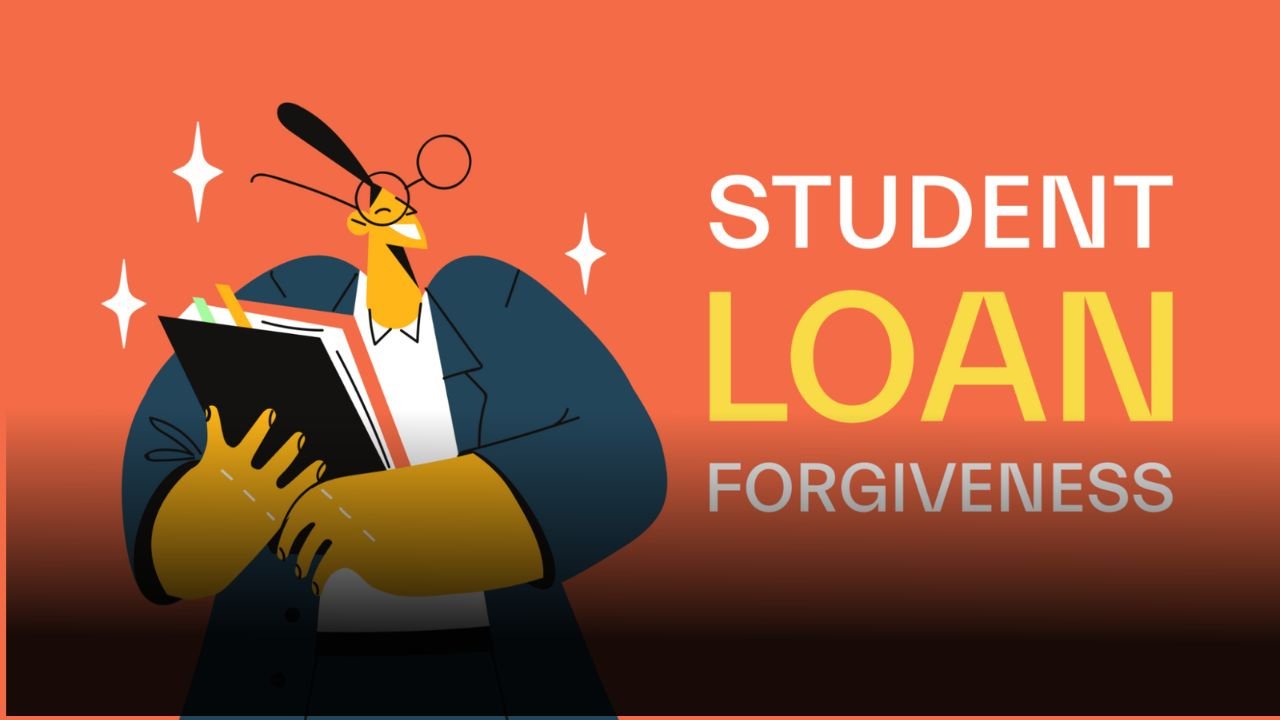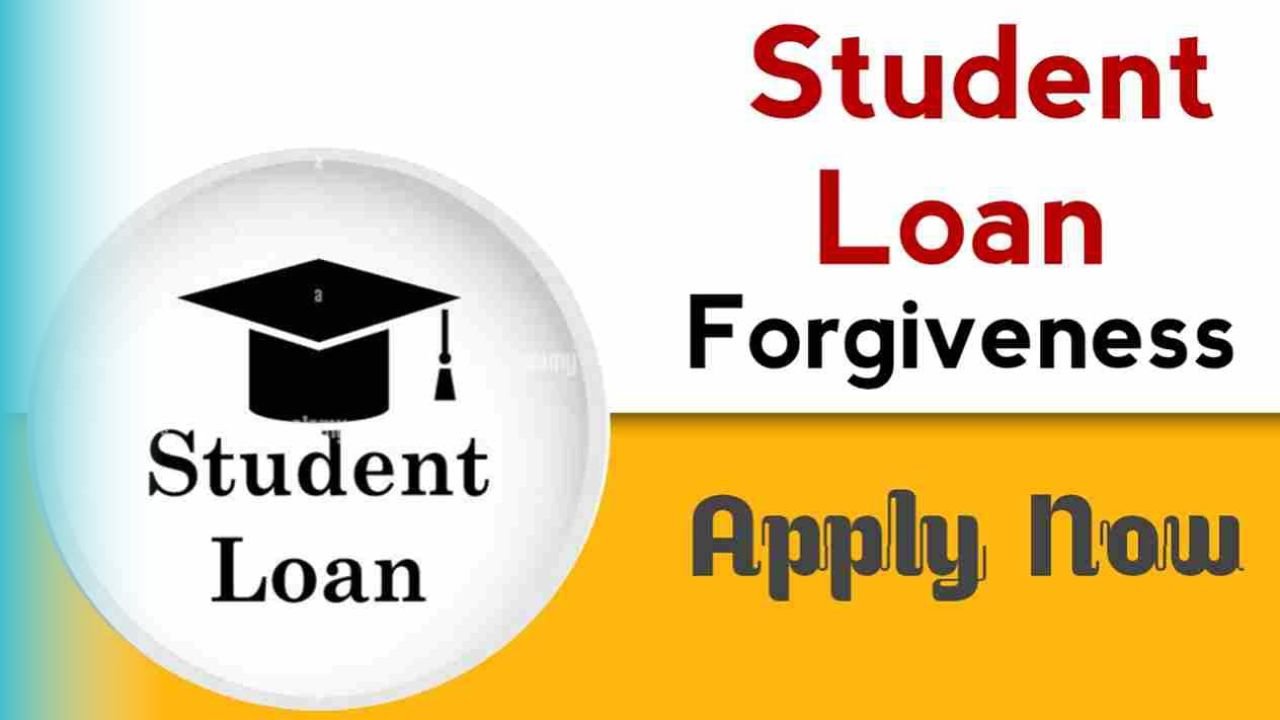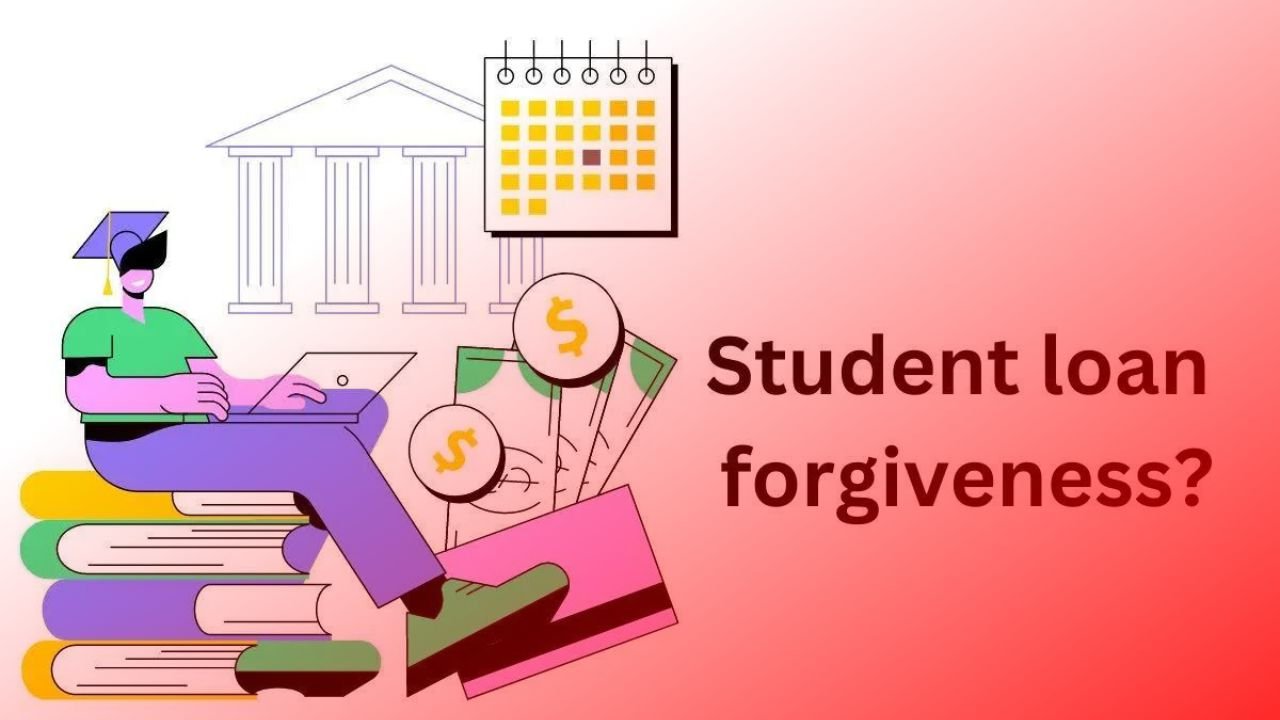Introduction of Student Loan Forgiveness
As millions of borrowers continue to be burdened by student loan debt, loan forgiveness has increased in popularity in recent years. We’ll go into the particulars of student loan forgiveness for the 2023–2024 academic year in this blog article, including the debt relief options, the application process, as well as important deadlines. Understanding your choices for student loan forgiveness is essential, regardless of whether you’re a seasoned borrower looking for relief or a newly graduated student trying to make ends meet.

Overview of Student Loan Forgiveness
Programs that allow borrowers to have some or all of their student loan debt forgiven under particular circumstances are commonly referred to as student loan forgiveness. These programs have the objective to help borrowers who have pursued careers in public service or other eligible fields, or who may be experiencing financial challenges.
There are many types of student loan forgiveness programs available, each with special advantages and eligibility criteria. Public Service Loan Forgiveness (PSLF), the most recognized program, forgives the balance that remains on Direct Loans if the borrower has fulfilled 120 eligible monthly payments while working full-time for an eligible business.
Other forgiveness programs include Income-Driven Repayment (IDR) forgiveness, which forgives any remaining balance on federal student loans after 20 or 25 years of qualifying payments under an income-driven repayment plan, and Teacher Loan Forgiveness, which offers up to $17,500 in forgiveness for teachers who work in low-income schools for five consecutive years.
Update on Student Loan for 2023-2024
The student loan forgiveness programs have gone through several changes and modifications as of the 2023–2024 school year. One important change is the inclusion of borrowers with Federal Perkins Loans and Federal Family Education Loan (FFEL) Programs to the PSLF program, provided they consolidate their loans into a Direct Consolidation Loan. Also, there have been talks in Congress about extending PSLF eligibility to borrowers who are employed by approved nonprofits or in other public service roles.
Borrowers need to remain informed of these revisions and modifications since they could impact their eligibility and rewards under different debt forgiveness schemes. Borrowers should frequently check for updates and changes regarding student loan forgiveness programs since the Department of Education and other trusted sources regularly provide advice and updates on these programs.
Application Process
While the process of applying for loan forgiveness might be challenging and time-consuming, it’s essential to follow the right processes to maximize benefits and guarantee eligibility. Depending on the kind of forgiveness program, the application procedure may differ, but it typically involves the following steps:
Determine eligibility: Review the eligibility requirements for the forgiveness program you’re interested in to ensure you meet all the criteria.
Gather documentation: Collect all necessary documentation, such as proof of employment, loan repayment history, and income information.
Complete the application: Fill out the appropriate application form for the forgiveness program you’re applying for, making sure to provide accurate and complete information.
Apply: Submit your completed application along with any required documentation to the appropriate loan servicer or government agency.
Follow up: Monitor the progress of your application and follow up with the loan servicer or agency as needed to ensure timely processing.
It is important to acknowledge that the application procedure can take many weeks to conclude, thus prospective borrowers ought to show caution and diligence in supplying any needed information or supporting materials.

Debt Relief Options
In addition to loan forgiveness programs, there are other debt-relief options available to borrowers struggling with student loan debt. These options include:
Loan consolidation: Consolidating multiple federal student loans into a single Direct Consolidation Loan can simplify repayment and potentially lower monthly payments.
Deferment and forbearance: Temporary postponement of loan payments through deferment or forbearance may be available for borrowers experiencing financial hardship or other qualifying circumstances.
Income-driven repayment plans: Income-driven repayment plans cap monthly payments at a percentage of the borrower’s discretionary income, making payments more manageable for borrowers with low income.
Loan repayment assistance programs: Some employers, especially in public service or nonprofit sectors, offer loan repayment assistance programs as an employee benefit to help employees pay down their student loan debt.
Exploring these debt relief options in conjunction with student loan forgiveness programs can help borrowers develop a comprehensive strategy for managing their student loan debt.
How to Apply for Student Loan Forgiveness
Application for student loan forgiveness necessitates meticulous documentation and close attention to detail. This is a comprehensive resource designed to assist borrowers in navigating the application process:
Examine eligibility requirements: Make sure you meet all the requirements for the forgiveness program you’re interested in by reviewing the eligibility criteria before applying.
Gather necessary documentation: Collect all required documentation, such as proof of employment, loan repayment history, and income information.
Complete the application form: Fill out the application form for the forgiveness program accurately and completely, following the instructions provided.
Apply: Submit your completed application along with any required documentation to the appropriate loan servicer or government agency.
Monitor the progress: Keep track of your application status and follow up with the loan servicer or agency as needed to ensure timely processing.
Stay informed: Stay updated on any changes or updates to forgiveness programs that may affect your eligibility or benefits.
To improve their chances of being granted forgiveness for their student loans, applicants should adhere to these guidelines and maintain organization throughout the application process.

Important Dates and Deadlines
For borrowers to guarantee early application submission and compliance with program rules, they must comprehend the important dates and deadlines associated with student loan forgiveness programs. The following are some crucial dates and deadlines to remember:
Application deadlines: Many forgiveness programs have specific application deadlines that borrowers must adhere to to be considered for forgiveness.
Payment deadlines: Making on-time payments is essential for maintaining eligibility for forgiveness programs, so borrowers should be aware of their monthly payment due dates.
Certification deadlines: For programs like PSLF, borrowers must submit an employment certification form annually or when changing employers to verify qualifying employment.
Tax implications: Forgiveness of student loan debt may have tax implications, so borrowers should be aware of any tax deadlines or reporting requirements associated with forgiveness programs.
By keeping track of these dates and deadlines, borrowers can avoid missing important milestones and ensure their eligibility for student loan forgiveness.
Conclusion
In conclusion, student loan forgiveness gives qualifying borrowers a route to financial freedom while also offering much-needed relief from the weight of student loan debt. Borrowers can efficiently manage their student loan debt by being proactive in managing their loan debt by being aware of key dates and deadlines, navigating the application process, and comprehending the various available forgiveness programs.
Frequently Asked Question
Who is eligible for student loan forgiveness?
Several criteria must be met to be eligible for student debt forgiveness, such as the loan type, repayment schedule, work history, and program requirements. Federal student loans are usually eligible for forgiveness programs, while private loans might not be.
What types of forgiveness programs are available?
Public Service Loan Forgiveness (PSLF), Teacher Loan Forgiveness, Income-Driven Repayment (IDR) Forgiveness, and forgiveness programs tailored to medical, dental, and military workers are just a few of the forgiveness options available.
How do I apply for student loan forgiveness?
The application procedure differs based on the type of forgiveness offered. Usually, borrowers must apply to the loan servicer or other appropriate body together with any necessary supporting papers. It's critical to pay close attention to the directions and adhere to all deadlines.
What is student loan forgiveness?
A program known as student loan forgiveness enables borrowers to have all or a portion of their student loans forgiven, usually in exchange for fulfilling specific requirements like teaching in low-income communities, performing public service, or maintaining consistent payment for a predetermined amount of time.
